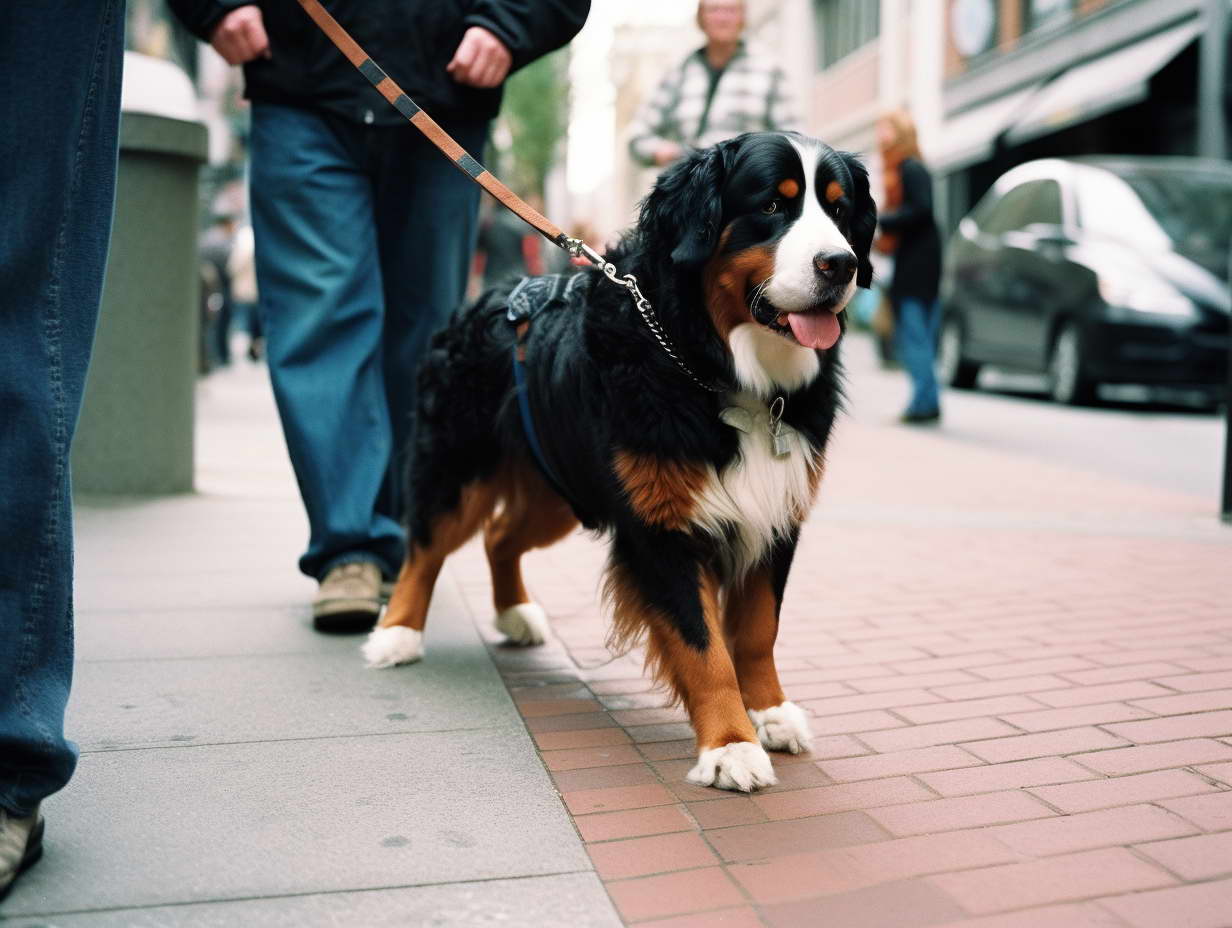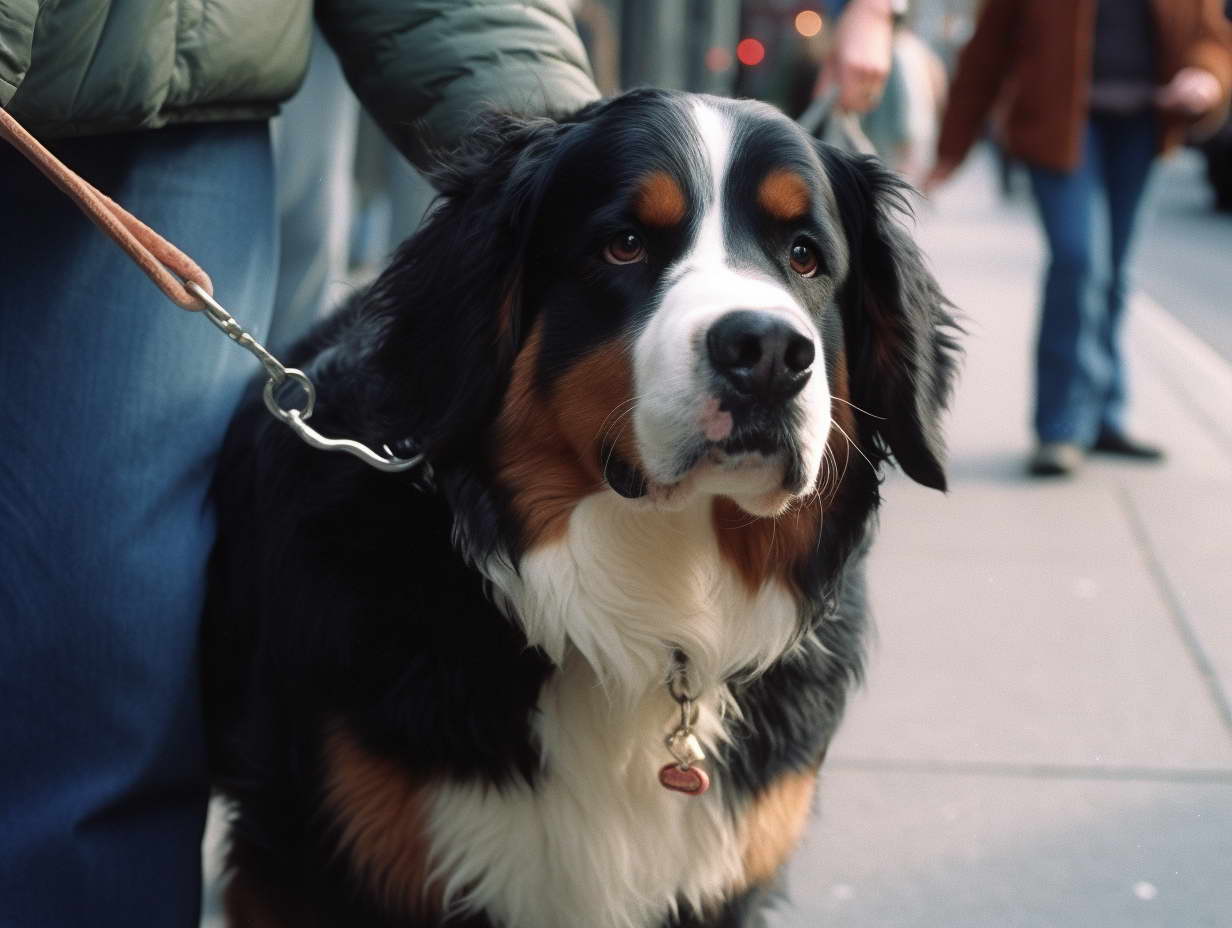How to Prepare Your Bernese Mountain Dog to be a Therapy Dog
As owners of Bernese Mountain Dogs ourselves, we know how wonderful and affectionate these canine companions can be. Their gentle temperament makes them ideal for therapy work, helping people in hospitals, nursing homes and schools cope during times of hardship or emotional difficulty. If you want to train your Bernese Mountain Dog to become one of these therapy animals then look no further! In this article, we guide how you can successfully train a Bernese Mountain Dog as a therapy canine.
Understanding Therapy Dog Requirements
Before we dive into training our therapy dogs, we must understand their requirements. Therapy dogs must be friendly and well-behaved around people – they should walk on leashes without pulling or lunging and tolerate different sounds/odors/tactile sensations as well as stranger touches without becoming aggressive toward either dogs or people. Furthermore, therapy dogs shouldn’t show aggression toward other dogs or people!
Socializing Your Bernese Mountain Dog
Socialization is key to creating an effective therapy dog. Your Bernese Mountain Dog should be exposed to new environments, people, and animals at an early age to build confidence while learning how to interact calmly and responsibly with other pets and people. Take your Bernese Mountain Dog along to various parks, stores, and events and allow him/her to meet up with other dogs/people alike!
Basic Obedience Training
Obedience training is key for therapy dogs. Bernese Mountain Dogs should know to comply with basic commands like sit, stay, come, and heel to remain attentive during therapy sessions and remain focused and attentive when meeting therapy dogs. When teaching these basic commands using positive reinforcement methods such as treats and praise they become much better at adhering to instructions during the therapeutic experience.
Once your Bernese Mountain Dog has completed basic obedience training, the next step should be advanced training. This should involve teaching him or her how to interact with people therapeutically – for instance by sitting quietly next to patients while they pet and hug them and also walking on leashes without pulling or lunging.
Certification and Registration Procedure
Once your Bernese Mountain Dog has completed its training, the next step should be registering as a therapy dog with various organizations and getting certified/registered with them as a therapy dog. Requirements may differ between organizations; generally speaking, however, certification involves an evaluation of temperament, behavior, and obedience skills; additional testing or training may be required depending on which organization offers certifications and registration services.
Preparing for Therapy Sessions
Before your Bernese Mountain Dog begins therapy sessions, it must be acquainted with the environment it will encounter. Make sure your pup is used to different sounds and smells as you practice different therapy scenarios such as sitting quietly next to a patient or passing through a busy hallway. Furthermore, ensure they’re clean and groomed appropriately before starting sessions.
Maintain Your Dog’s Training
Training your Bernese Mountain Dog should be an ongoing journey; even once they are certified. Regular sessions allow your pet to maintain focus while giving both you and them the chance to connect more intimately.
Therapy Dog Benefits
Therapy dogs provide many advantages to those experiencing difficulties, studies have proven this. Therapy dogs can help alleviate anxiety and stress levels while simultaneously decreasing blood pressure levels and elevating overall mood levels – not to mention helping individuals feel less alone and connected to society!

Conclusion
Training your Bernese Mountain Dog as a therapy dog is a rewarding journey, one which should take patience, consistency, and positive reinforcement to bring comfort and healing to those in need. When starting their therapy dog training experience be sure to socialize them properly as well as provide basic obedience instruction before teaching them how to interact in therapeutic environments once certified/registered – the benefits are truly immense and your Bernese Mountain Dog could make a significant impactful contribution to many lives!
FAQs
- Can any dog qualify as a therapy dog?
Unfortunately not. Therapy dogs need to be friendly, and calm, and behave themselves around people for optimal therapy work. - What’s the difference between therapy dogs and service dogs?
Therapy dogs offer emotional support and comfort to people, while service dogs are specifically trained to perform tasks for people living with disabilities. - How long does it take to train a Bernese Mountain Dog as a therapy animal?
Training generally lasts from several months up to one year depending on each dog’s temperament, behavior, and training methods. - Can I train my Bernese Mountain Dog myself as a therapy dog?
While you could train your Bernese Mountain Dog on their own, professional trainers or organizations offer invaluable help in training therapy dogs successfully. - Do therapy dogs need to belong to any specific breed?
No; therapy dogs of any breed with appropriate temperament and behavior for therapy work are welcome!


Leave a Reply